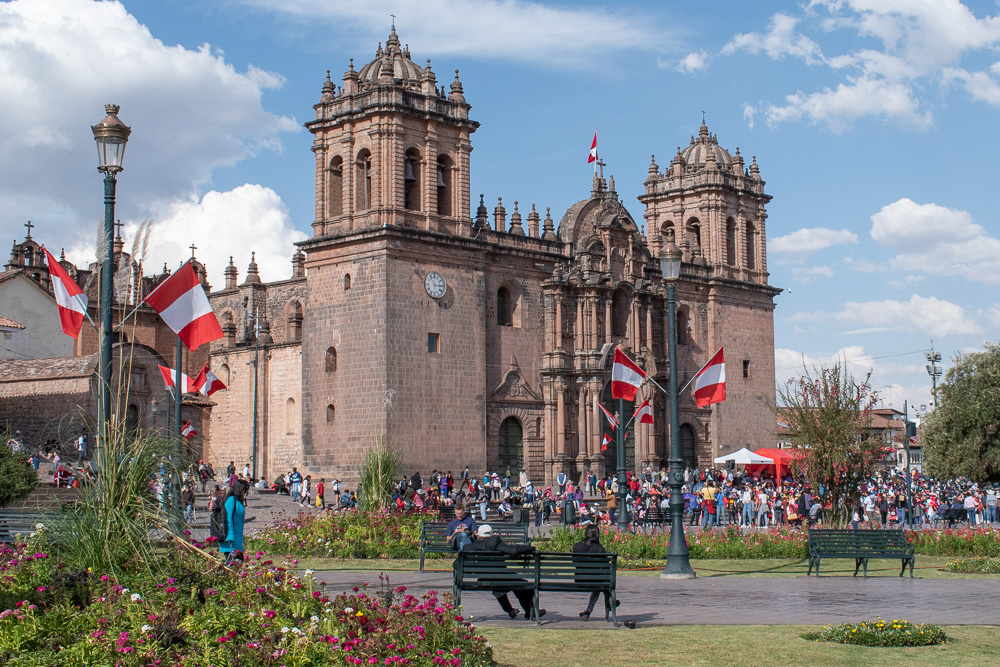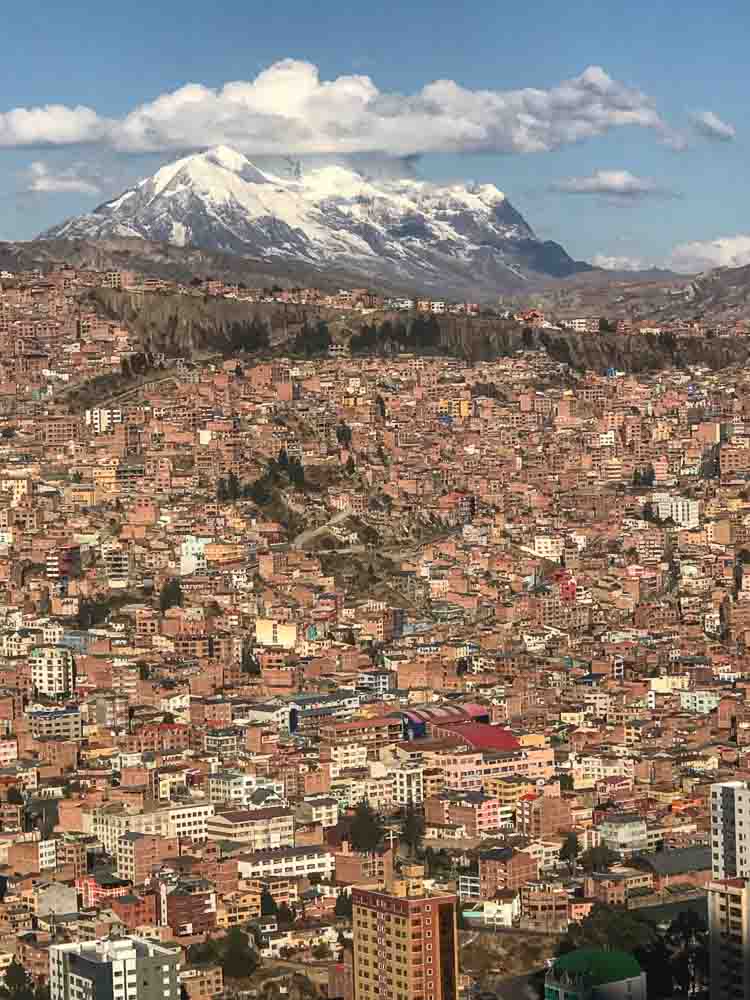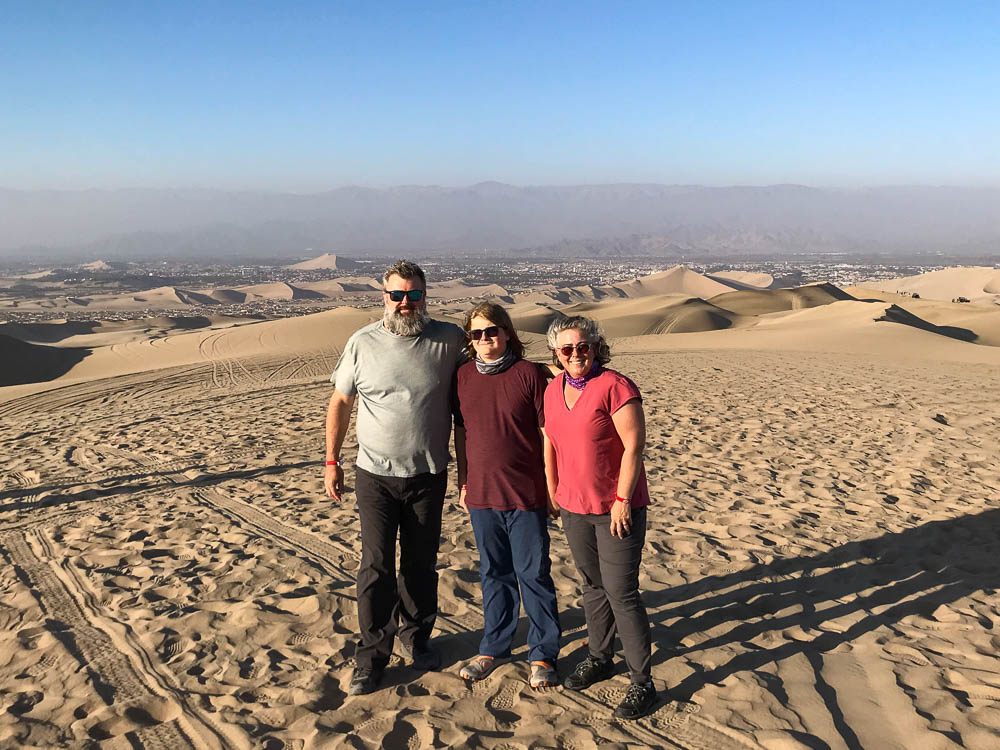RTW – Lake Titicaca
After an overnight bus ride from Cusco, we arrived around 5am in Puno, gateway to Lake Titicaca. Our Peru Hop bus dropped us off at our hotel, where we found a place to stash our luggage and then a place to sit and wait for breakfast. Breakfast (and more importantly coffee) finally arrived at 6:15am and helped us recover from the overnight trip and prepare ourselves for a full day of sightseeing.
Cruising Lake Titicaca
The reason for stopping in Puno on the way from Cusco to Bolivia is to see Lake Titicaca, the world’s highest navigable lake. People mainly come here to see the floating islands of Uros, which are built by the inhabitants from reeds which grow abundantly in the lake shallows. There are also other islands to visit and you can arrange for homestays in villages on the lake shores. We didn’t think we would be up for a rustic village stay after our overnight bus ride, but we thought it would be a shame to do the short tour that only went to the floating islands after coming all the way to this remote area, so we opted for a full day tour that visited the floating islands and one other island, Taquile.
I have always wanted to visit Lake Titicaca since reading about the floating islands as a child. Doing our research before our trip we read a lot about how over-touristed these islands are now, with a lot of travelers being underwhelmed by the experience. On the other hand, at least tourism is preserving a way of life that would otherwise disappear. As a result, we had low expectations, but still wanted to see the floating islands for ourselves.
Uros Islands
At 6:45am a bus picked us up for our Lake Titicaca cruise. After a short ride we boarded a boat and set off. It wasn’t long before we were motoring along a channel between the reeds, then a short while later we landed on our first floating island. Our tour group sat on a circle of benches (made from reeds) and our guide gave us an introduction to the lake and the Uros Islands.

The chief of the island then told us about the daily life of the island’s inhabitants. She used some very cute visual aids, which coincidentally were examples of the kind of handicrafts that were available for sale on the island.


It was interesting hearing about how much of the traditional way of life remains. Both the chief and our guide also discussed how the Uros islanders integrate into the modern world. The children go to school on the mainland, traveling in motorboats which also bring supplies and building materials to the islands. Solar panels have brought electricity to the islands.
After our guide and the chief had presented their information we were given some time to explore the island. We also had the opportunity to buy a souvenir of our visit. Walking around on the floating island felt substantial enough to be safe, but there was an interesting “give” with each step.

Lachlan summoned up the courage to climb a rickety tower to a viewing platform to get an overview of the island (and have his photo taken).


The Trouble With Titicaca
Up until now, the experience was very touristy but similar to many major tourist locations. We didn’t realize things were about to kick up a notch in intensity.
After some time wandering the island, resisting the hard sell of the souvenir-sellers, it was time to move on. We declined the opportunity for a ride (at extra cost) on a boat made out of reeds. Our tour boat was heading to the same place, as were all the tour boats after they had each spent time at different islands.

The next destination was a central island that seemed designed to extract money from tourists, without adding to our experience or understanding of the Uros Islands. There were expensive drinks and souvenirs for sale, which we passed on. We did spend some money to use the restrooms, where the entry fee was enthusiastically enforced. Heide had a run-in with an attendant who tried to extract a second payment. We waited around for all the commercial activities to conclude, ready to move on to our next stop.

We don’t regret visiting the Uros Islands, it is a unique place. However, the overcrowding and hard sell were even worse than we expected, so I wouldn’t blame any traveler for giving them a miss.
Taquile Island
As we had signed up for the full day tour, we had one more island to visit. We set off for the long ride across Lake Titicaca to Taquile Island. This island is famous for its handicrafts, especially textiles. We also looked forward to our lunch stop here.
Taquile is a narrow, hilly island. We arrived at a landing point that featured an imposing set of stairs climbing to the top of the island. This turned out to be quite a challenge, harder than our previous day’s walk to Sacsayhuaman. The elevation here is higher than Cusco, and the stairs are very steep. We would have to earn our lunch this day.
After (barely) making it to the top of the island, we saw spectacular views of Lake Titicaca.

The views continued as we followed the path towards our lunch stop. It reminded us a little of Santorini, but far less developed.

Along the way we met some of the sheep who provide the wool for the island’s famous textiles. Interestingly enough, we didn’t get the chance to buy any of these handicrafts the island is supposed to be famous for.

As we continued, we drew closer to the island’s main town.

We enjoyed fresh trout for lunch before heading down 550 stairs to meet our boat.

Although definitely not as strenuous as the climb up, this was still quite a workout due to the high altitude and steep stairs.

Back to Puno
The final part of our tour consisted of a three hour ride across Lake Titicaca back to Puno. By this time the overnight bus trip and early start was really having an effect on us. We had enough energy to find a pizza place near the hotel for dinner, then we were asleep in our cozy hotel room by 9pm.
I have mixed feelings about Lake Titicaca. It’s a logical and popular stop on the backpacker trail from Peru to Bolivia. The famous floating islands are an interesting thing to see, but seeing them involves participating in the kind of tourism that we would generally prefer to avoid. I guess we’ll put this in the “been there, done that” category and move on with our journey.




















 Travel Magazine
Travel Magazine